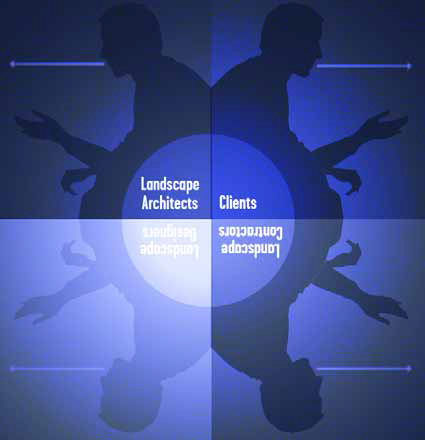education
With a busy schedule, it's too easy to use the same tools repeatedly in project designs. Yes, you can mitigate the repetition to a certain extent by using those tools differently each time, but the fact remains that many of us tend to design over and over again with the same plants, hardscape materials and structural approaches because it's what we know and trust. But let's face it: Most clients don't want exactly what someone else has; instead, they want one element from this garden and a special plant from that one. From a design perspective, selecting new plants every time is
Reader Chris Walton asked a great question in response to comments I've made in a couple of recent columns about the value of detailed plans: "Why do we in the pool industry lump sales, design and project assessment into one job description?" In the message surrounding his question, he explained in some detail that his firm, PoolDizine, Inc., of Jacksonville, Fla., takes basic plans and proposals for swimming pools and other watershapes and turns them into complete and extremely detailed sets of construction documents and plan drawings that can be used in generating accurate bids and that also provide detailed specifications for the construction process. To be sure, he has an interest in altering
I've never been big on trade shows and conferences. For years I have resisted them in the belief that they were mostly for those who had time to attend them and craved the camaraderie and social opportunities they offered. I've always looked at the programs and have seen that there's usually been something to learn during these events, but I brushed off the possibility of attending because I always thought I could get most of what I needed by working and paying attention to books and magazines. Also, there was always the issue that, as the sole provider in a one-person operation, spending so many days away from my clients and prospects would prove
Local historians claim that the image of Philadelphia's Fairmount Water Works was the most reproduced of any industrial site in the United States through the first half of the 19th Century - and for good reason. At that time, the facility represented the absolute state of the art and served as a major point of pride for local residents as well as a source of fascination to visitors from near and far. Throughout its long history, the facility was indeed at the leading edge of water-delivery technology and is now the ideal place to capture and tell the story of the development of environmentalism in the 19th and 20th centuries. The story begins
I recently wrote a Letter to the Editor of Landscape Architecture, the magazine of the American Society of Landscape Architects, in response to an editorial he wrote on the lack of interest among landscape architects in plant knowledge. The gist of his commentary was that, for too many years now, landscape architects had been focusing on hardscape and overall design and were reserving little creativity, interest, or care for botanical adornments. My response was a supportive rant, as this has been a pet peeve of mine for years and I strongly believe that
What do you really want to know about the arts and crafts of landscaping and watershaping? That's an important question for each and every one of us in the trades to ask of ourselves, because without knowing what you want to know (or at least what you think you should know), all of the talk about the value and power of education is just so much rhetoric. I bring this up because, for a long time now, leaders and regular folks from all walks of the watershaping trades have been beating the educational drum. You read about it in every trade magazine, hear it in the vast majority of seminars and see it in the promotional messages of those who stage trade shows and conferences. Indeed, the
I never really thought much about the plants and trees surrounding me until I started edging my way toward the landscape-design business. Growing up, I'd look out my bedroom window and into our backyard and see plants and trees, but I didn't know that they were called Junipers or Giant Birds of Paradise or Ficus trees. They all looked pretty much the same to me - a generic veil of greenery. My path of discovery began when I bought my first house on Long Island. All of a sudden, there were rules about
When I was a kid, I was obsessed with hot rods. I suspect this resulted from my dad's subscriptions to magazines such as Road & Track and Street Rod: I was mesmerized by
It's painfully obvious that too many mainstream watershapers are satisfied to treat each site in basically the same way. By contrast, I go to great lengths to examine each space from a variety of perspectives, and the fruits of that effort are reflected in the design work that follows. In fact, if I had to point to a single aspect of my design work that most often sets me apart from my competition, it's the detail I go into when examining a site. Certainly the best book I've ever read about site planning and analysis is the one I first encountered during my second year in college. Written by John Ormsbee Simonds, a distinguished instructor at Harvard Design School and Michigan State University, Landscape Architecture: A Manual of Site Planning and Design (McGraw Hill, 1983) is one of the most complete treatments of






















